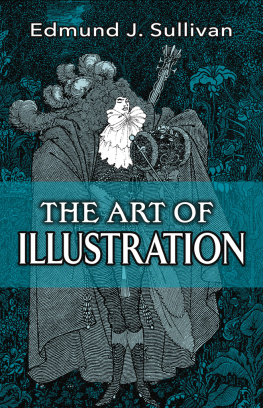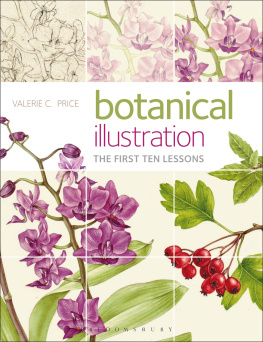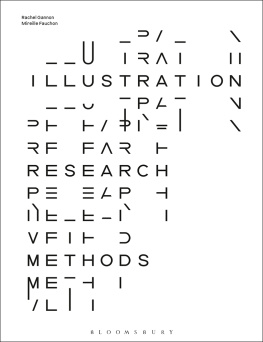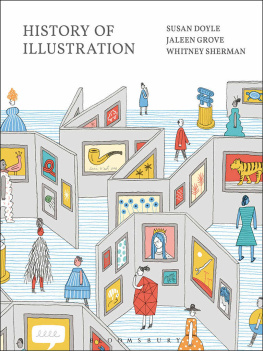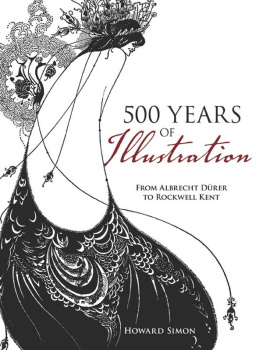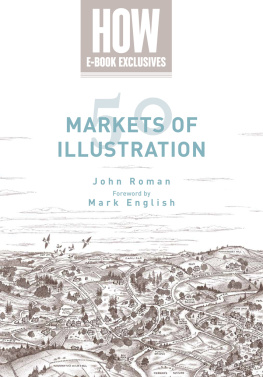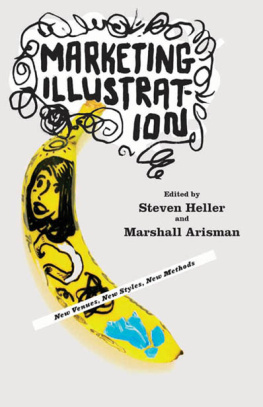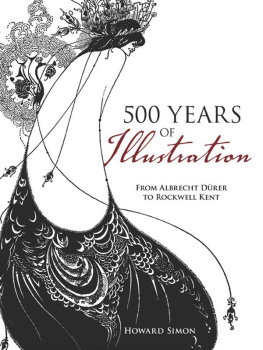
Original frontispiece: Jobs Comforters by A. Boyd Houghton
THE ART OF
ILLUSTRATION
Edmund J. Sullivan
DOVER PUBLICATIONS, INC.
Mineola, New York
Bibliographical Note
This Dover edition, first published in 2016, is an unabridged republication of the work originally published in the Universal Art Series by Chapman and Hall Ltd., London, in 1921. The original black-and-white frontispiece has been reproduced here on the inside front cover.
Library of Congress Cataloging-in-Publication Data
Names: Sullivan, Edmund J. (Edmund Joseph), 18691933, author.
Title: The art of illustration / Edmund J. Sullivan.
Description: Mineola, New York: Dover Publications, 2016. | Includes index. | This Dover edition, first published in 2016, is an unabridged republication of the work originally published in the Universal Art Series by Chapman and Hall Ltd., London, in 1921.
Identifiers: LCCN 2016017822| ISBN 9780486810058 (paperback) | ISBN 0486810054
Subjects: LCSH: Illustration of booksTechnique. | BISAC: ART / General. | ART / History / General.
Classification: LCC NC960 .S8 2016 | DDC 741.6/4dc23 LC record available at https://lccn.loc.gov/2016017822
Manufactured in the United States by RR Donnelley
81005401 2016
www.doverpublications.com
INTRODUCTION
I T is not generally till a book is finished that the author finds out what he wants to sayyet reading through what I have written, I find a certain drift which it may be as well to point out and summarize, as though I had been aiming all the time at a foregone conclusion.
The book has been written with no foregone conclusion, but in addition to technical notes, contains some examination of what is expressible in terms of pictorial art loosely summed up under the heading of Illustration.
In view of all the possibilities as well as the performances of modern process reproduction, I have found it hardly necessary, except in such technical notes as I have given, to refer to Book Illustration as a special form of applied art. What is of interest is the question of the content of Art.
To my regret I have never seen anything but reproductions of Michael Angelos frescos in the Sistine Chapelbut my regret is qualified by the belief that as decoration they can be nothing but a stupendous misconceptionand that Whistler, with a choice of two or three simple tones, and the disposal of a restful pattern, would have produced an effect infinitely more pleasant to the sthetic sense if that alone is to be considered. Michael Angelo demands of the spectator a concentrated optical and mental attention under the most uncomfortable physical conditions; and for a full appreciation of the work it would, I imagine, be necessary to lie on ones back with a pair of field glasses, in an attitude not far removed from that of the deer stalker in the Highlandsor to develop a most elastic rubber neck.
Yet, even if Whistlers draughtsmanship had been on a level with that of Michael Angelo, none would say that he was the greater artistfor while Whistler displays a delicacy of perception and a perfection of taste, he yet, with all his distinction, remains a pigmy beside a giant. Why should this be, unless for the discrepancy between the richness of the intellectual content of the art of one and the thinness of texture of the other?
It seems to have been Whistlers aim to divorce art from life, except in so far as life presented itself to him in the shape of optical phenomenaand not only to specialize art, but to concentrate attention solely upon it, rather than to look upon art as a possible vehicle for the expression of the entire content of the mind. In that, while other artists had endeavoured to extend the boundaries of expression in accordance with the extension of the confines of thought, he aimed at exclusiveness rather than inclusiveness, he was reactionary and conservative rather than radical and revolutionist. His protest, both in practice and propaganda, was directed against the excesses of the time in which an inappropriate sentimental or anecdotic interest had come to outweigh pictorial beauty and an appreciation of the medium of expression. In order to make this protest in favour of an sthetic of the eye more effective, he went as far as he could to eliminate the expression of all but such sensation as can be aroused by physical vision and its immediate action on the mind.
G. F. Watts, noble designer as he was, with, for the present time a somewhat dmod grandeur of pictorial conception that will yet come back to its full appreciation, did on occasion fall out of bed on the other side.
The present tendency is to endeavour to enlarge the scope or at least change the method of expression, rather to the neglect of what may be expressedto create a new and unfamiliar language in order to make a re-statement of old and familiar facts. Yet why invent a new language to tell us that a body is solid, if it is a fact we already knew? It only adds a new voice to Babel, and gets no nearer the truth. What is of interest is the character the solid body is possessed ofthe spiritual essence as well as the form it inhabits, and the impact the whole complex solid makes upon the whole complex mind, and not only upon, or by, the retina. The means of expression of the physical response have been exploited beyond the responses of the spirit. Is the artist alone to disregard the greater part of his own reaction?
All means of expression should be exploredbut it is not words only, nor even a mellifluous flow of them, that make poetryand an sthetic that in its aim at a simple and finite perfection would exclude even a hint of the infinite, restful as such an art may be, may after a short contemplation increase the fretfulness it was intended to allay. Art can produce an anodyne for the pain of livingbut the production of an anodyne is not the whole aim of art. Art contains, or must be made to contain, means for the expression of the whole of life, and life at its most vivid.
It is not only from the study of optics, the rhythm of flat pattern, or the presentation of objects in their three dimensions of length, breadth, and depth, all of which have been pursued with something approaching a feverish despair of art inseparable from any entirely materialistic view, so much as from a reconsideration of the possible content of art that the great advance, if ever there is to be one, is to be hoped for.
Art is a sacramentand answers to the old definition an outward and visible sign of inward spiritual grace. It cannot be limited to the outward sign, no matter how exquisite the sign or the ritual may be. The inward grace is the matter that has been neglected in the recent pursuit.
Art speaks a universal language. Has it no more to say?
NOTE AND ACKNOWLEDGMENTS
T HE Illustrations have been arranged roughly in chronological order, each artists work together; a method which it is thought, in spite of certain drawbacks and incongruities inevitably arising, will provide the most useful and convenient form of reference.
The author and publishers wish to express their indebtedness to the courtesy of those gentlemen without whose kind permission it would not have been possible to include the many copyright works appearing in this volume:
The Leadenhall Press, Ltd., for Orrible and Revoltin Details, A Swell, from Phil Mays Guttersnipes.
Messrs. Wm. Heinemann for pictures from Nicholsons Alphabet, Countess, Lady.
Messrs. Bradbury Agnew and Co., Ltd. (Proprietors of Punch), for Charles Keenes pictures, Punch Almanack, 1877, Delicate Attention, No Accounting for Taste, p. 306.
Next page
